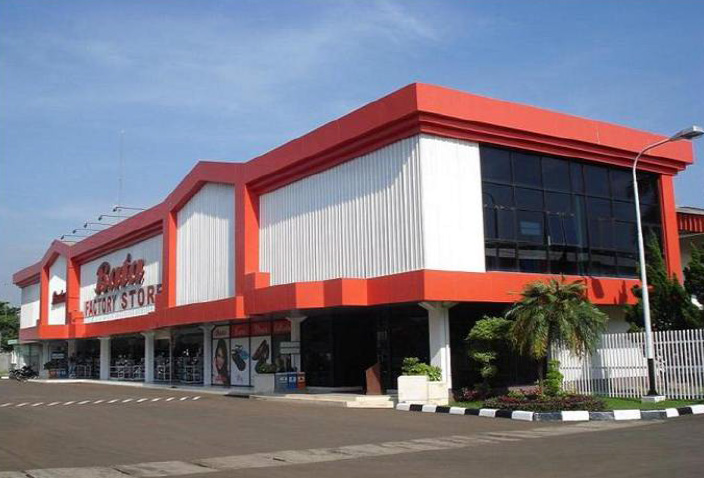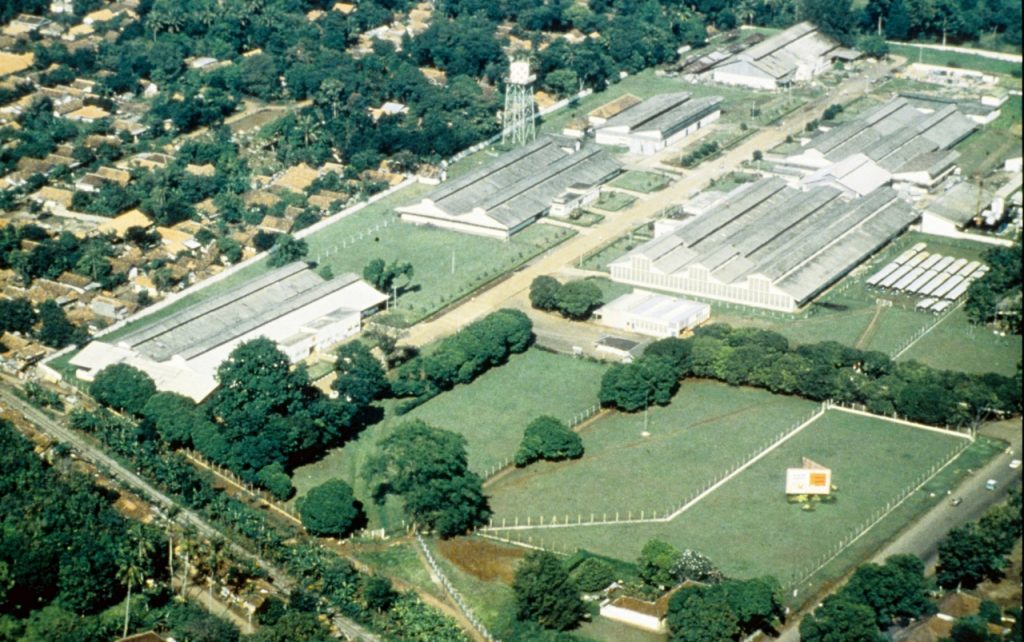Tomas Bata´s business in today´s Indonesia can be traced to 1930 when the first shops were opened in the country. A year later, a sister company was set up, and after a few years a shoe factory was built. Bata´s business continued in the next decades and expanded in 1995 with a new modern factory. Bata is operating in the country even today.
- In 1926, Bata had a warehouse to supply inter-war Dutch India, the export to the country gradually increased: 5,000 pairs (in 1928), 390,000 pairs (in 1932), 242,000 pairs (in 1936), 657,000 pairs)
- In 1930, the company was selling footware in its own shops in the cities of Batavia, Surabaya, Belang, Semerang, and at the end of that year a fifth store was opened – in Pandong
- On October 15, 1931, the company N. V. I. Schoenhandel Mij Bata was registered, its seat was soon moved from Tandjoeng Priok to Batavia; in that year the firm employed 33 members of staff in its shops
- In 1932 the sales network expanded considerably with 31 new stores: Semarang, Salatiga, Probolingo, Soerabaya II, Glodock, Cornelius, Priok, Soekaboemi, Poerwokerto, Tegal, Djoca, Tijlaptjap, Cheribon, Beutenzorg, Pekalongan, Magelang, Tasikmalai, Poerworedjo, Garoet, Bandoeng II, Bandewoso, Pasoeroan, Kediri, Djember, Madieon, Madjokerto, Blitar, Tjapoe, Banjowangi, Lomedjang, Malang II
- In 1937, Bata purchased land for the construction of a shoemaking factory
- In 1938 the company had 70 own sales places in the country, in 1939 there were 269 of them registered
- In 1935-1937 the production of leather shoes started in Bata´s own production plant
- In August-September 1938, the construction of a new factory for leather and rubber footwear began in Kalibata near Batavia, production began on November 22, 1939 (in 1940 the local authorities took over the supervision over the factory – considering the links to the parent company in divided and occupied Czechoslovakia)
- In 1941, the factory in Kalibata produced 2,100,000 pairs of rubber footwear and 406,000 pairs of leather footwear
- In August 1945 Indonesia was declared an independent country and the company was newly registered on October 11, 1945 in the new state; production at the Kalibata factory was restored in May 1946
- As a result of war events, the number of shops decreased, in 1947 the company operated 5 shops and 15 sales outlets
Sales network – Indonesia, 1950s
| YEAR | NUMBER OF SHOPS | NUMBER OF EMPLOYEES |
| 1951 | 31 | 250 |
| 1953 | 37 | 290 |
| 1955 | 42 | 286 |
| 1956 | 49 | 223 |
- In 1955, the factory production in Kalibata reached 1,200,000 pairs of leather footwear (15% of total production in Indonesia) and 3,280,000 pairs of rubber footwear (25% of total production in Indonesia); the number of employees in the factory rose from 1,514 in 1951 to 2,016 in 1956
- 1962 – Bata Shoe Company Limited (Indonesia, formerly “N.V. Nederlandsche Indische Schoenhandel Maatschappij Bata”) and P.T. Biro Bangunan Roba (Indonesia) were listed as Bata companies in the company historical register
- In 1965-1967, as a result of political changes, the firm´s business in the country was temporarily restricted (nationalisation)
- In 1980, a sister company Perusahaan Sepatu Bata P. T. (manufacturing, retail/dealer/ wholesale/export) operated in Indonesia
- In 992, the following Bata companies were active in Indonesia:
- Bata Sepatu, Jakarta
- Branch Office, Surabaya
- Bata Sepatu, Medan
- In June 1994, the construction of a new modern factory in Purwakarta began, 75 kilometers southeast of Jakarta; production started in January 1995, 500 jobs were found there, annual production – around 3,500,000 pairs of shoes
Sources:
- Bata, The Bata Shoe Organisation, 1978
- Bohumil Lehár, Dějiny Baťova koncernu, Praha 1960
- Jaroslav Pospíšil – Hana Pospíšilová, Rub a líc baťovských sporů, Zlín 2012, ISBN 978-80-7473-037-5
- Thomas J. Bata, Remmembered, Zlín 2016, ISBN 978-80-7473-398-7
- Moravský zemský archiv v Brně – Státní okresní archiv Zlín, Česko
- Podnikový archiv Bata, Batanagar, India



